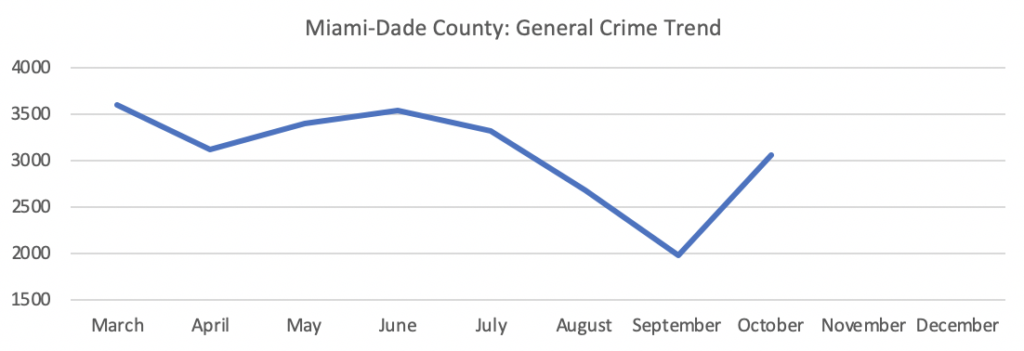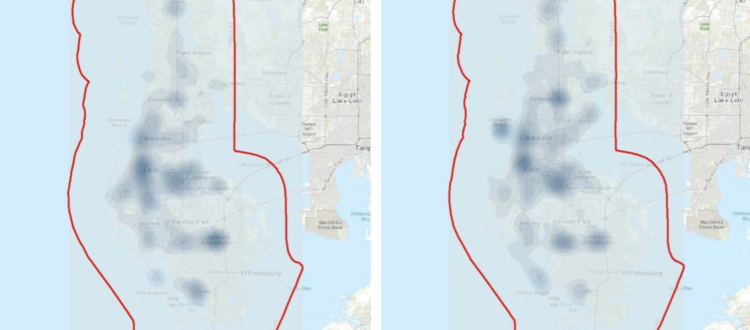Geography professor studies correlation between crime rates, COVID-19 in 2020
Geography professor studies correlation between crime rates, COVID-19 in 2020
By Karla Arboleda
Major cities in Florida saw a decrease in crime during March and April in 2020 compared to 2019 and an increase during May and June in 2020 compared to 2019 leading up to COVID-19 and associated economic impacts.
Yujie Hu, an assistant professor in the Geography Department at the University of Florida College of Liberal Arts and Sciences, studied crime rates across areas in Florida and upticks in COVID-19 cases during the year. His project titled Examining the relationship between COVID-19 and crime focuses on analyzing data starting in early March to present time.
Effects after eight months
Once officials could formally introduce the novel coronavirus as the cause of COVID-19, there was a clear increase in cases across Florida because the pandemic officially hit the United States. Cases decreased in May because of the lockdown measures ordered by local governments in April, and they jumped in numbers again in June as businesses reopened.
“Beaches, swimming pools, hotels and venues were allowed to reopen (50% capacity) on June 1 in Miami-Dade County,” Hu said, adding that to the list of reasons for a spike in cases. “We want to see if there are any really abrupt changes; we call it change point detection analysis.”
Ongoing events throughout the year have been just ahead of spikes in the number of positive COVID-19 cases. While health experts encourage the use of face masks and practicing social distancing to reduce the chance of infection, positive cases have continued to increase, most notably after large gatherings.
“Regardless of the cities, we saw a very clear statistically significant peak in change point at the end of May,” Hu said, referring to increases in cases correlated to increases in crimes. “From that point on, we saw some other change points in August and a few in June.
“There were a lot of factors: Black Lives Matter Protests and we hypothesized something related with the election,” Hu said of events with nationwide participation which contributed to a higher likelihood of crime happening.
Crimes in Florida
Theft and assault accounted for 70 percent of crimes in Miami-Dade County throughout the pandemic. About 30 percent of crimes during the same time consisted of burglary, alcohol violations, fraud, homicide, motor vehicle theft and robbery.

By analyzing spatio-temporal patterns, the researchers will show the month-to-month varied correlation between crime rate and COVID-19 cases in addition to where there are statistically higher chances of crime happening.
“The most relevant policy implication from this project is to help law enforcement agencies better understand and predict what’s going on with crime events during or after COVID-19,” Hu said.
Dr. Yujie Hu will be sharing more results on his research projects during his virtual seminar with the Informatics Institute, Examining the relationship between COVID-19 and crime. RSVP here.


